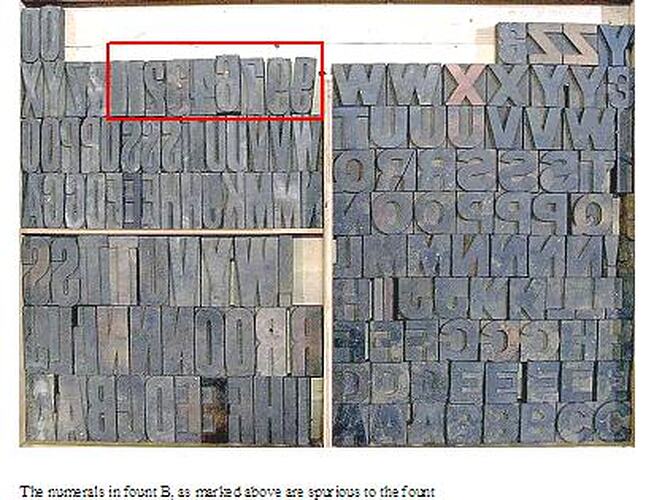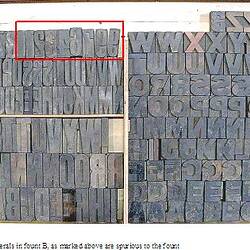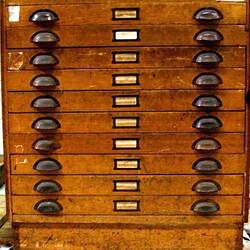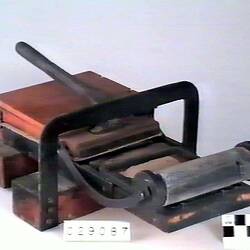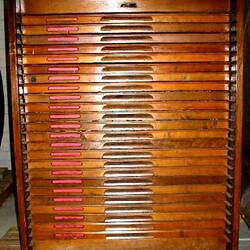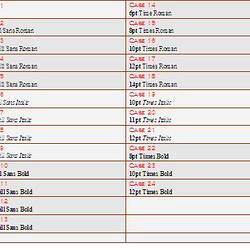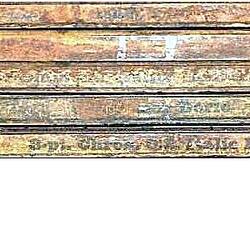Pure metals seldom contain all desirable properties for any specific purpose and this is true for printing type, where frequently mixtures of two or more components are used. Metal type contains three ingredients - lead, antimony and tin and is known as a Ternary alloy. Combinations with lead, antimony and tin produce low melting point alloys that are used to make metal printing type.
Lead has a melting point of 327° C [620°F], and is found in galena (lead sulphide); alone, lead is too soft for type metal. Antimony is a white, crystalline metal, with a melting point of 630°C [1166°F] and is found in Stibnite, a compound of antimony and sulphur. Tin is a silver-white metal with a melting point of 232°C [457°F] and occurs in nature as an oxide called cassiterite.
Different casting methods require different alloy mixtures, and whilst there are many attributes associated with different aloys, the primary one is the ability to produce sharp-edged, smooth-faced impressions. The basic alloy, on which all are based, is a metal alloy consisting of 4 parts Tin, 12 parts Antimony and 84 parts of Lead. This was commonly referred to as the 4-12-84 Linotype formula and has the lowest melting point of all type metals at 463°C. Depending on the requirements of the printer - linotype required for lengthy runs for example - the formula could be changed to increase hardness. The less lead used, the harder and more-lasting is the type.
Monotype generally used an alloy formula of 8 parts Tin, 16 parts Antimony and 76 parts Lead, [8-16-76] with a melting point of 512°C. Contrary to popular belief, monotype casting could use the linotype formula, where a printer wanted a uniform alloy on the factory floor.
Foundry type, the hardest and longest wearing [and the costliest] of all type metal, was made up of 12 parts Tin, 23 parts Antimony and 65 parts Lead, with a melting point of 620°.
Brinell hardness
Named for the Swedish engineer Johan A. Brinell (1849-1925), who devised the method of determining the hardness of a metal or alloy by pressing a steel ball into its surface under standard pressure and measuring the surface area of the resulting indentation.
Brinell hardness number
The measure of hardness - a number expressing the hardness of a metal or alloy. It is the ratio of the pressure applied to a steel ball forced into the surface of the metal to the surface area of the resulting indentation.
More Information
-
Keywords
-
Authors
-
Article types
